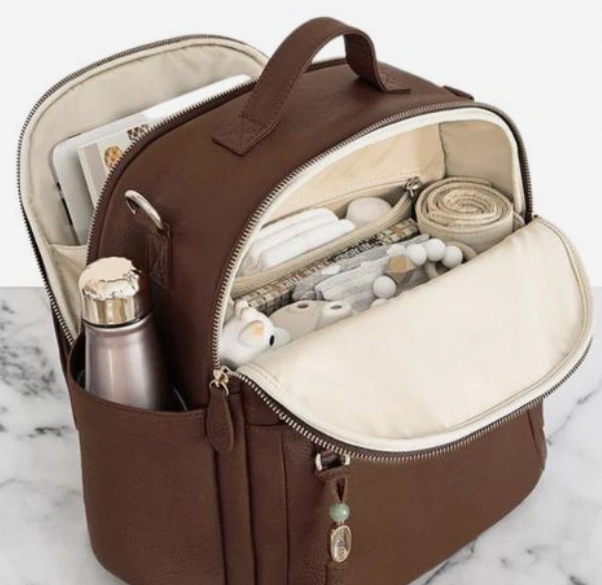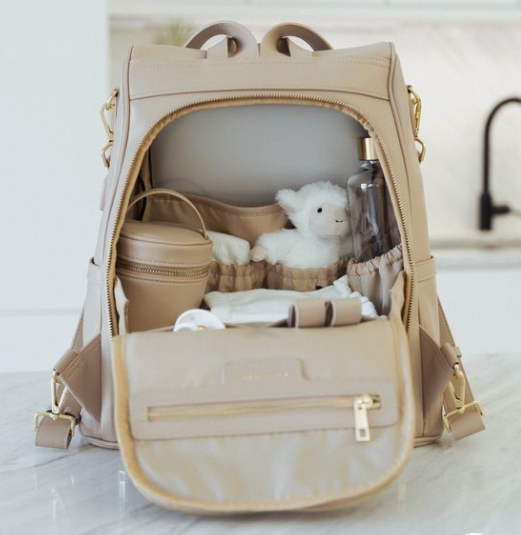Exploring the Diaper Bag: A Deep Dive into Each Essential Category
While the previous response offers a great starting point, let’s delve deeper into each category within your diaper bag, exploring factors to consider and additional options:
Diapering Essentials: A Deep Dive into Every Item
Diapers:
- Size: Beyond just weight, consider your baby’s build and absorbency needs. Snug but not tight is key. Explore overnight diapers for increased capacity.
- Material: Cloth diapers offer sustainability but require more effort. Disposable diapers come in various materials; hypoallergenic options are available for sensitive skin. Bamboo-based diapers are an eco-friendly alternative.
- Brands: Experiment to find a brand that fits your baby well and offers features you value, like wetness indicators or stretchy waistbands.
Wipes:
- Material: Cloth wipes are reusable and eco-friendly, but require additional cleaning. Biodegradable disposable wipes offer a compromise. Consider the texture and thickness based on your baby’s comfort and cleaning needs.
- Solution: Opt for water-based wipes for sensitive skin or choose wipes with gentle cleansers if needed. Fragrance-free options are generally recommended.
- Warmers: Optional, but some parents find warmed wipes more soothing for their babies.
Diaper Rash Cream:
- Zinc Oxide: A common and effective barrier cream for preventing and treating diaper rash. Choose a concentration between 10% and 20%.
- Petroleum Jelly: Can be used for stubborn rashes, but it’s not a preventative measure.
- Natural Options: Consider creams with calendula, shea butter, or coconut oil, but patch test for allergies first. Consult your pediatrician for specific recommendations based on your baby’s needs.
Disposable Bags:
-
Plastic Bags: Standard option, but not eco-friendly.
-
Biodegradable Bags: Break down more quickly than plastic, but might be more expensive.
-
Reusable Wet Bags: Washable and environmentally friendly option, but requires cleaning and drying.
Additional Considerations:
- Diaper Pail Liners: Biodegradable or reusable options are available.
- Diaper Sprayer: Attaches to your toilet and provides a more hygienic way to clean reusable diapers.
- Bath Wipes: Gentle wipes for quick cleanups between diaper changes.
Diaper Changing Pads: Choosing the Perfect Fit
The humble changing pad, while seemingly simple, plays a crucial role in both convenience and hygiene during diaper changes. Let’s delve deeper into the various options and considerations to help you choose the perfect fit for your family:

Material:
- Waterproof Surfaces: Essential for easy cleaning and preventing leaks. Vinyl, nylon, and TPU are common choices. Consider PVC-free options for added peace of mind.
- Softness and Comfort: Some babies might prefer softer surfaces like cotton or fleece, especially for sensitive skin. However, these materials might require more frequent laundering.
- Breathability: Mesh or breathable fabrics promote airflow and minimize discomfort, especially during warmer months.
Portability:
- Folding Pads: Compact and lightweight, ideal for travel and outings. Look for built-in pockets for wipes and diapers, and consider features like straps or handles for easy carrying.
- Contoured Pads: Offer added head and neck support for newborns, but might be bulkier for travel.
- Changing Mats: Thin, lightweight options that roll up or fold easily, perfect for quick changes on the go.
Additional Features:
- Elevated Headrest: Provides a comfortable position for diaper changes and tummy time.
- Side Flaps: Help contain messes and prevent spills from reaching surfaces.
- Machine Washable: Convenient for keeping the pad clean and hygienic. Choose materials that retain their shape and softness after multiple washes.
- Disposable Liners: Add an extra layer of protection and make cleanup easier, but contribute to waste. Consider reusable liners or biodegradable options.
Beyond Essentials:
- Changing Pad Covers: Add a decorative touch and personalize your diaper bag. Choose materials that are easy to remove and wash.
- Changing Pad Organizer: Keeps essential items like wipes, creams, and diapers within easy reach on the pad itself.
- Portable Changing Stations: All-in-one solutions with a pad, storage compartments, and sometimes even a wipe-clean surface, ideal for picnics, park visits, or other outdoor activities.
Remember:
- Safety First: Ensure the pad is stable and prevents your baby from rolling off. Consider using safety straps or wedges if needed.
- Hygiene: Clean the pad regularly with disinfectant wipes or machine wash according to the manufacturer’s instructions.
- Personalization: Choose a pad that suits your lifestyle, budget, and baby’s comfort needs. Don’t be afraid to experiment with different options!
Feeding Essentials:
- Bottles and Formula: Consider bottle type (wide-mouth, angled), nipple flow rate, and formula preparation methods (pre-portioned, powdered, ready-to-feed).
- Breastfeeding Supplies: Lanolin-based nipple creams, breast milk storage bags, nursing covers for privacy on the go.
- Food for Older Babies: Finger foods like puffs, teething crackers, or pouches suited for their developmental stage and dietary needs. Opt for unsweetened, age-appropriate options.
- Sippy Cup or Water Bottle: Choose spill-proof designs with easy-to-grip handles. Consider insulated options for maintaining temperature.
Comfort and Entertainment:
- Pacifiers: Different shapes and materials cater to baby’s preferences. Opt for BPA-free and age-appropriate sizes.
- Teethers: Textured teethers for gum stimulation, cooling teethers to relieve teething discomfort, consider consulting your pediatrician for specific recommendations based on your baby’s teething stage.
- Small, Age-Appropriate Toys: Crinkly books, soft rattles, stacking cups, sensory toys engage and soothe your baby.
- Blanket: Lightweight muslin blankets or swaddles for swaddling, cuddling, or providing comfort.
Other Essentials:
- Hand Sanitizer: Choose alcohol-based sanitizers effective against germs. Consider wipes or sprays depending on your preference.
- Extra Change of Clothes: Pack an extra outfit for spills, blowouts, or unexpected messes. Choose comfortable, easy-to-change clothes.
- Sunscreen and Hat: Broad-spectrum SPF 30+ sunscreen for exposed skin and a wide-brimmed hat for sun protection. Reapply sunscreen frequently, especially after swimming or sweating.
- Thermometer: Digital thermometers offer quick and accurate temperature readings. Consult your pediatrician for guidance on using a thermometer with your baby.
- Medications: If your baby takes medication, pack them in their original containers with clear dosage instructions. Consider a medication organizer for easy access.
Additional Tips:
- Personalize: Pack items specific to your baby’s needs and preferences, such as a sound machine for sleep or specific comfort items.
- Destination Matters: Pack accordingly for weather, activities, and travel duration. For example, beach trips might require swimsuits and beach toys.
- Checklist: Create a personalized checklist to ensure you don’t forget anything important. Update it as your baby’s needs evolve.
- Packing Hacks: Utilize space-saving organizers, pack lightweight clothes that roll up easily, and consider a backpack-style diaper bag for hands-free convenience.

